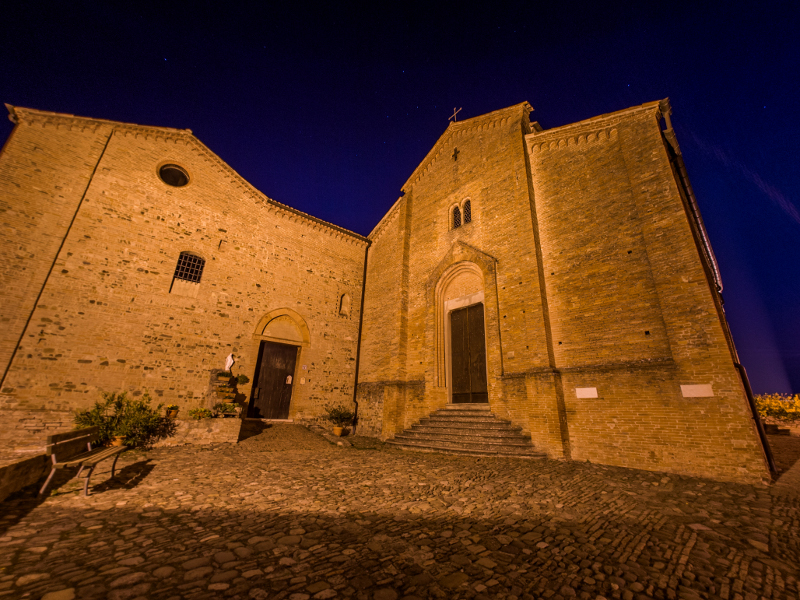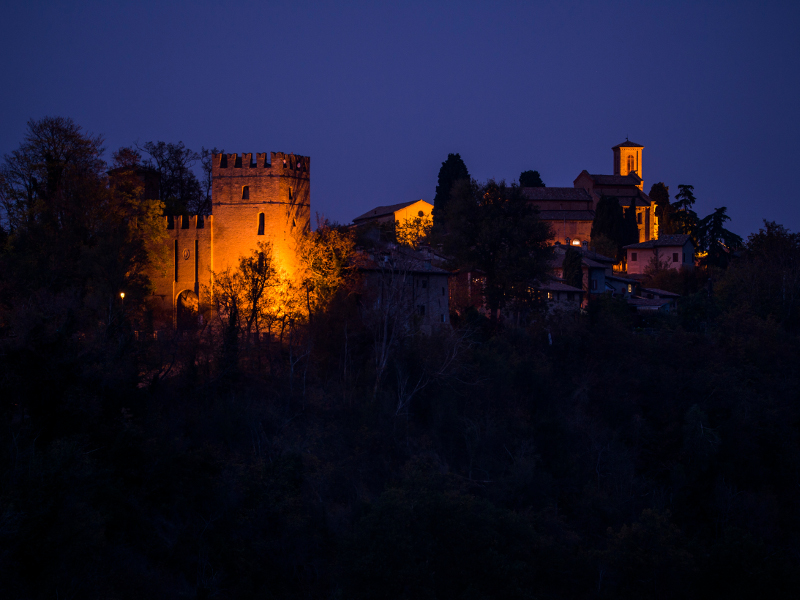Home » Nature and Territory » Parco Regionale dell'Abbazia di Monteveglio » Protected Area
History and Landscape
It is one of the richest territories in the regional archaeology, it was inhabited since prehistory, and it gained significance during the Roman and Byzantine period. It was the protagonist of the tragic events occurred in the Middle Age, and it was relegated on the edge of history during modern times.
After invading the Lombard territories, Charlemagne set the borders of his kingdom near Bazzano, which resulted in the Samoggia Valley becoming once again a border area.
During the 9th and 10th centuries, including after the Hungarian invasions, new castles were erected in the valley, in part over the ruins of Byzantine strongholds (at Monteveglio, Bazzano, Oliveto, Serravalle, Zappolino, Savignano).
In the mid-10th century much of the valley, where the Nonantola Abbey had extensive properties, became a fief of the Canossa Family: Countess Matilda controlled Bazzano, Monteveglio and the strongholds at Monte Morello and Monte Alfredo (now Monte Freddo).
The heart of the park was the scene of a key moment during the battle for investiture between the Papal State and the Empire, the siege of the castle in 1092. The Castle of Monteveglio victoriously withstood the siege, with Henry IV's army suffering a major defeat (he even lost a son in the battle) that was probably decisive as he definitively withdrew from Italy a number of years later. Matilde, who had actively followed the heroic resistance of Monteveglio from the Reggiano hills, sending support and engaging in negotiations with the Emperor, subsequently consolidated the castle and its parish church and granted special privileges to the inhabitants as a reward for their valor.
The first signs of the city's recovery began to appear after Matilde's death, when Monteveglio became a free municipality, alternately siding with Modena and Bologna in the endless battles between these two cities.
The most famous battle took place in 1325 at the Zappolino Castle, in the fields of Saletto and Parviano: backed by a strong Ghibelline army, the Modenese routed the Bolognese (the battle inspired Tassoni's "La secchia rapita" – the stolen bucket), who probably suffered their most crushing defeat.
Monteveglio's combative destiny continued over a long period of time, with a series of battles and conflicts that culminated in the legendary attempt by the Lanzichenecchi and Charles V's imperial army to capture the castle in 1527. According to legend, a sudden and heavy snowstorm forced them to disperse and a votive procession is held every year to commemorate this event.
The fortifications were no match for the artillery weapons that were introduced in the 1500s and many castles in the Samoggia Valley were destroyed. Only the castles of Bazzano, Monteveglio and Serravalle survived.
In the meantime, the Church had already set up parishes, churches and chapels throughout the Samoggia area that still dot the valley today with their widespread distribution. The Church had an enormous influence on the formation of rural towns, with a precise territorial identity often existing between parish and community.
The area's history played an increasingly marginal role in the centuries that followed. Under French rule the parishes were unified into larger districts, near the modern-day municipalities: Oliveto and Montebudello, which had been independent municipalities in the Middle Ages, became hamlets of Monteveglio.
After the unification of Italy, the town of Monteveglio moved downhill from the ancient village towards the valley floor near the Ghiaia Stream. It was a slow process. Only from 1936 was there a distinction between Monteveglio and Upper Monteveglio. The local road network remained rather rudimentary for a long time and a modern road system only began to appear when the first artisan and industrial facilities opened in the 1960s. However, the secondary road system was not abolished and there are long stretches which still retain the charm of those ancient hilly roads.
2024 © Ente di gestione per i Parchi e la Biodiversità - Emilia Orientale
Piazza XX Settembre, 1 - 40043 Marzabotto (BO)
Tel. +39 051 6701260-6254811 - Fax +39 051 6254521
E-mail protocollo@enteparchi.bo.it - PEC enteparchibo@cert.provincia.bo.it
P.IVA CF 03171551207
Codice univoco per la fatturazione elettronica: UF2KK4
E-mail protocollo@enteparchi.bo.it - PEC enteparchibo@cert.provincia.bo.it
P.IVA CF 03171551207
Codice univoco per la fatturazione elettronica: UF2KK4




